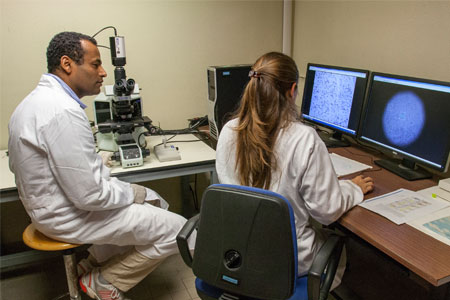- Autori:
-
Kutzler, Johannes; Polettini, Aldo Eliano; Bleicher, Sergej; Sauer, Christoph; Schultis, Wolfgang; Neukamm, Merja A.; Auwärter, Volker
- Titolo:
-
Synthetic cannabinoids in hair—Prevalence of use in abstinence control programs for driver's license regranting in Germany
- Anno:
-
2023
- Tipologia prodotto:
-
Articolo in Rivista
- Tipologia ANVUR:
- Articolo su rivista
- Lingua:
-
Inglese
- Formato:
-
Elettronico
- Referee:
-
Sì
- Nome rivista:
- DRUG TESTING AND ANALYSIS
- ISSN Rivista:
- 1942-7603
- Intervallo pagine:
-
1-14
- Parole chiave:
-
LC-HR-MS; SCRA; cannabimimetics; mandatory drug testing; new psychoactive substances
- Breve descrizione dei contenuti:
- Although the use, structural variety, and prevalence of synthetic cannabinoids (SCs) have steadily increased on the drug market, they are rarely analyzed in abstinence control programs for driver's license regranting. The aim of this study was to determine the SC prevalence in these programs by analyzing hair samples collected between March 2020 and March 2021 from various regions in Germany, mainly Bavaria (40%). Specimens were analyzed quantitatively for drugs of abuse and qualitatively for 107 SCs. Hair samples were screened by liquid chromatography-tandem mass spectrometry (LC-MS/MS), and to search for unknown SC analogs, positive samples were additionally screened by liquid chromatography-high resolution time of flight mass spectrometry (LC-qTOF/MS). The analysis of 5097 hair samples resulted in 181 SC detections (3.6%), showing a wide range of 44 SCs, with up to 13 different compounds found in a single sample. The most prevalent compounds were 5F-MDMB-PICA and MDMB-4en-PINACA; furthermore, 10 new substances not initially covered by LC-MS/MS analysis were detected by LC-qTOF/MS. The SC positivity rate was comparable to cocaine (5.4%) and amphetamine (2.6%). Only in 35 cases (0.7%), SC analysis was requested by the clients, highlighting the insufficient coverage of SC consumption in the studied collective. In summary, hair sample analysis proved to be a valuable tool to monitor the use of SCs. In order to keep pace with newly emerging SC analogs, an up-to-date analytical method is essential. Prospectively, SCs should be more routinely screened in hair analysis for abstinence control to avoid cannabis substitution by SCs.Synthetic cannabinoids (SCs) have steadily increased on the drug market but are rarely analyzed in abstinence control programs for driver's license regranting. Between March 2020 and March 2021, hair samples from this collective were retrospectively screened for SCs by liquid chromatography-tandem mass spectrometry (LC-MS/MS) analysis, and those testing positive were additionally screened by liquid chromatography-high resolution time of flight mass spectrometry (LC-qTOF/MS).image
- Id prodotto:
-
137454
- Handle IRIS:
-
11562/1118287
- ultima modifica:
-
4 febbraio 2024
- Citazione bibliografica:
-
Kutzler, Johannes; Polettini, Aldo Eliano; Bleicher, Sergej; Sauer, Christoph; Schultis, Wolfgang; Neukamm, Merja A.; Auwärter, Volker,
Synthetic cannabinoids in hair—Prevalence of use in abstinence control programs for driver's license regranting in Germany
«DRUG TESTING AND ANALYSIS»
,
2023
,
pp. 1-14
Consulta la scheda completa presente nel
repository istituzionale della Ricerca di Ateneo 








